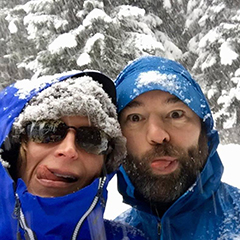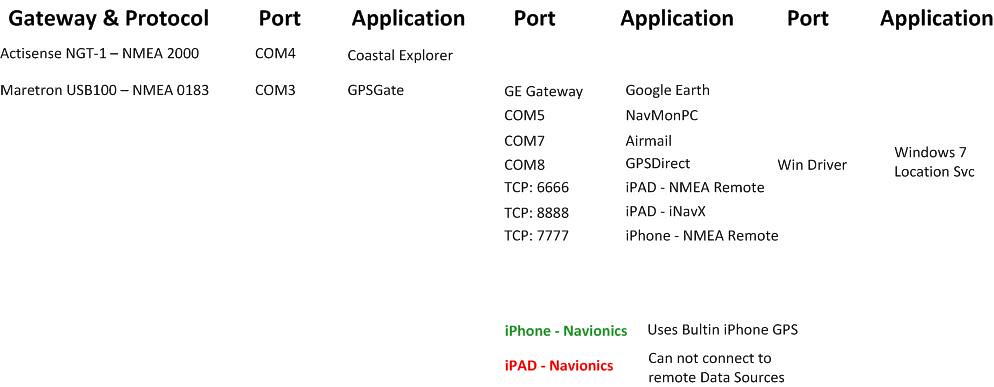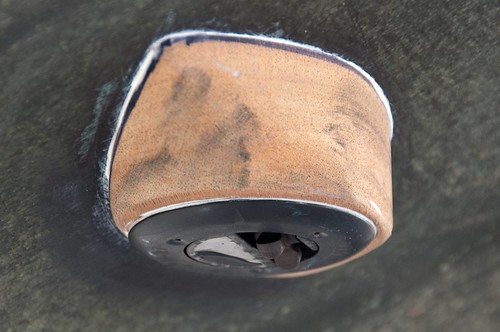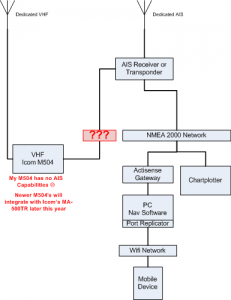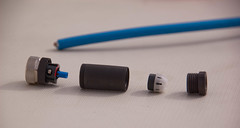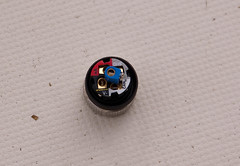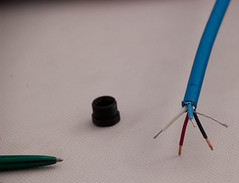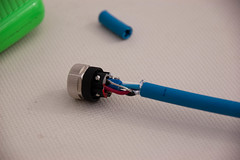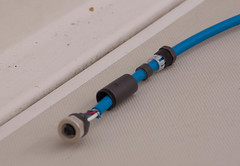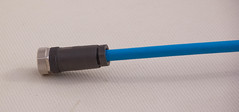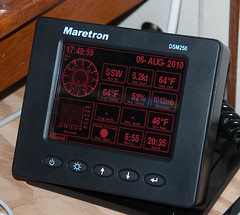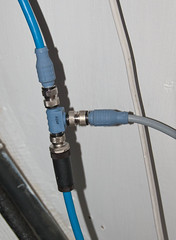Actisense NGW-1-ISO Firmware Upgraded fixes incorrect Position passed to Icom M504
Posted on Thu 08 December 2011 in Nav Station
I have been noticing a problem with the position displayed in my Icom M504 VHF. My current latitude is 24°09.200N. But the VHF was displaying 2°49.200. The GPS data is fed to my VHF and my SCS PTC-IIUSB modem from the NMEA 2000 network via the Actisense NGW-1-ISO (NMEA 200 to NMEA 0183) gateway.
I contacted Actisense support and they suggested I upgrade the firmware in my NGW-1-ISO. That involved a multi-day hunt for serial cables here in La Paz. In the end, I found them at Sterens which is on Forjadores across the street from the Plaza de La Paz (AKA the Soriana shopping center) with help from the gang at Club Cruceros de La Paz. BTW, Sterens is an electronics store with all kinds of cables, connectors, and electronics doo-dads. More like a Radio Shack than a Frye’s, but better than the Radio Shack’s here and cheaper too! I paid \$89 MXN for 2 6ft serial cables.
Once I had the serial cable in hand, I cut one end off the end I wouldn’t be connecting to the computer. I then used the continuity test on my multimeter to label all the wires so I knew which wire went to which pin on the DB9 connector I would be plugging into my computer. You need to label each wire to its proper DB9 RS232 cable pinout because later you’re going to need to connect Pin X with the Red wire on the NGW-1-ISO, etc. This is not hard at all. Your digital multimeter has a continuity test. You stick one of the probes into Pin 1 and test each wire, when it beeps you label that wire as #1 and so on.
With all the wires labeled, I was ready to connect the NGW-1-ISO’s wires to the Serial Cable as specified in the NGW-1-ISO manual for connection to a PC. Once that was done, I ran Actisenses’s upgrade utility, selected the COM port the serial cable was connected to and performed the upgrade. I offer all that detail in case one of you needs to do it too. There currently is no other way to upgrade the non-USB Actisense gateways.
After all that, I connect everything back up to my ICOM M504 and the position is now being displayed correctly. This is VERY important in case we ever need to use the DSC Distress call on our VHF which transmits an alert and our position. Without this fix the position would have been wrong!
Crisis averted. The world is now safe for eating delicious homemade cupcakes which Dawn made last night. Its good here. Its very good here!
